The French House is surrounded by interesting and beautiful places to visit and explore. Beautiful forest walks can be accessed from the house without needing a car.We've picked out some of our favourite places that are within easy reach of The French House.
-
Arromanches »
-
Pegasus Bridge »
-
Utah Beach »
-
Caen »
-
Bayeux »
-
Giverny »
Honfleur
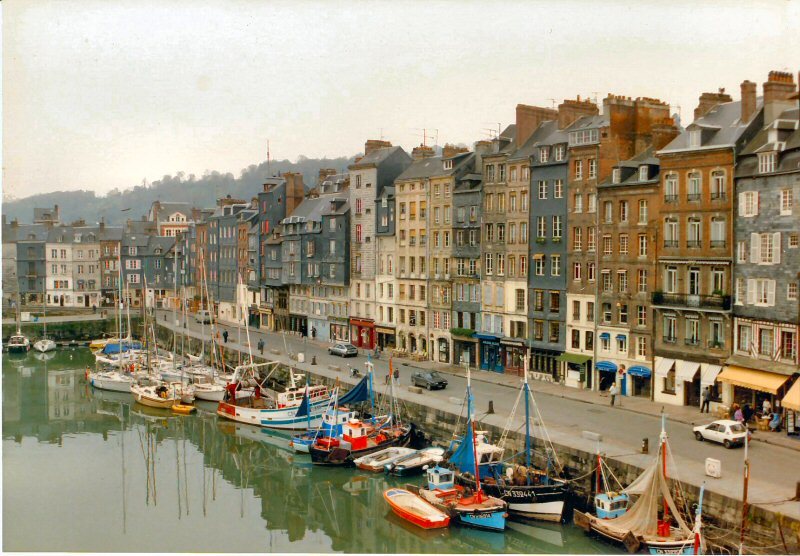
Throughout the year, Honfleur fills with over 4 million visitors from around the world, some arriving in cars or coaches or camper vans or large palatial cruise barges from Paris, and some via large cruise ships berthing in LeHavre or smaller ones arriving in the tiny port beside Honfleur as part of their tour around the British Isles.
Honfleur is so enchanting that people often forget it was originally built for trade. The harbour was chosen for its strategic location on the southern bank of the Seine estuary. During the Hundred Years’ War, the French king fortified the port, although that didn’t stop the English taking over for several decades.
Early expeditions to the New World sailed from the port including Jean Cousin who landed in Brazil in 1488, four years before Christopher Columbus ‘discovered’ America, and Binot Paulmier de Gonneville, a navigator, left Honfleur in 1504 to explore South America. The last king of France left from Honfleur to go into exile after praying in the Chapel at the Cote de Grace above the town.
Before the French Revolution, Honfleur’s shipowners made their fortune from trading, especially with North America. Samuel de Champlain, one of the most famous explorers associated with the port, headed off from Honfleur to establish the Canadian city of Quebec. Lucrative trade for the Honfleur shipping magnates included cod-fishing off Newfoundland and the triangular slave trade.
Honfleur is a hospitable town with around 150 restaurants, 60 art galleries, boutique shops for gifts, antiques, interiors, fashion plus local speciality foods and drinks.
An out-of-town outlet complex has recently been built near the Pont de Normandie that offers designer brands from Paris plus parking and a shuttle bus into Honfleur.
Because it is busy throughout the year, Honfleur’s guests are cared for by staff who live in the town. It is not a place that is shuttered out of season and hosted by seasonal staff. It is truly a year-round, lived in place, enjoyed by Normandy locals plus visitors from Paris and all over France and from around the world. It is also a fishing port with boats arriving daily with fresh catches that are consumed in the town’s restaurants or sold on the quayside. There are many festivals throughout the year.
The Boudin Museum in Honfleur celebrates the ‘king of skies’, the local artist Eugene Boudin who inspired Monet to paint in the open air to better catch the vibrancy of light. The nearby Erik Satie Museum is a whimsical and surreal homage to the eccentric composer born in Honfleur who had played in the local Church, Saint-Leonard, before leaving for Paris to play in the Montmartre cabarets. In 1917 he wrote music for Parade, a ballet created by Diaghilev, written by Jean Cocteau with sets painted by Picasso. You can watch a film of it in a tiny cinema in the museum.
Honfleur invests its tourist wealth in keeping its ancient architecture protected and in good order plus helping to manage the four million visitors each year. The whole town is full of flowers that are immaculately maintained and renewed all year round. There are extensive parks stretching through the town, with walks to the Naturospace Butterfly House, and on to a large estuary beach that has cocktails and jazz music in the summer. Christmas in Honfleur is especially beautiful.
Honfleur is built in the shadow of the Cote de Grace, the first of the many fingers of land that reach down to the Seine. Between these fingers are fair valleys, including where the river Morelle wends its way past The French House, emptying into the Seine and onwards to the English Channel. Those ‘fingers’, created during the last ice-age, are features along the whole Seine valley, through to the inland port of Rouen.
Our regular meeting place, summer and winter, is L’Albatros, a bar overlooking the reflections of the beautiful 14th century buildings surrounding the old port with a Carousel turning in the square in front of the Hotel de Ville. Thousands of visitors from The French House have been encouraged to make the pilgrimage to L’Albatros, not least as a midday meeting place on Saturdays after visiting the large Honfleur street markets. The Tourist Information website can be visited at www.ot-honfleur.fr for more information.
Beuzeville
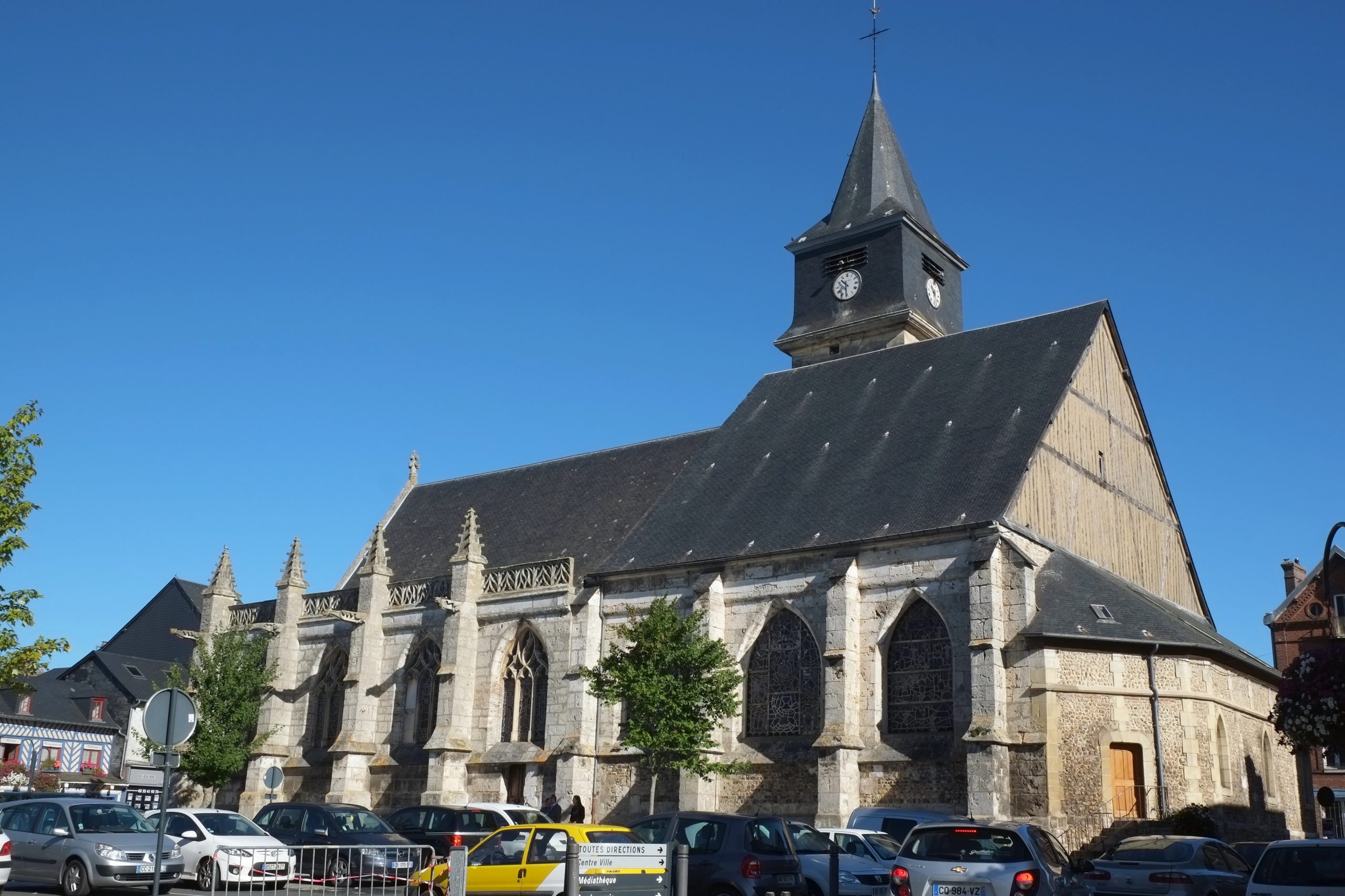
Beuzeville is a commune in the north-western part of the department of Eure in the Haute-Normandie region in northern France. Located on the Lieuvin plateau, it is adjacent to the communes of Pont-l’Évêque, Honfleur and Deauville.
Trouville-sur-Mer,
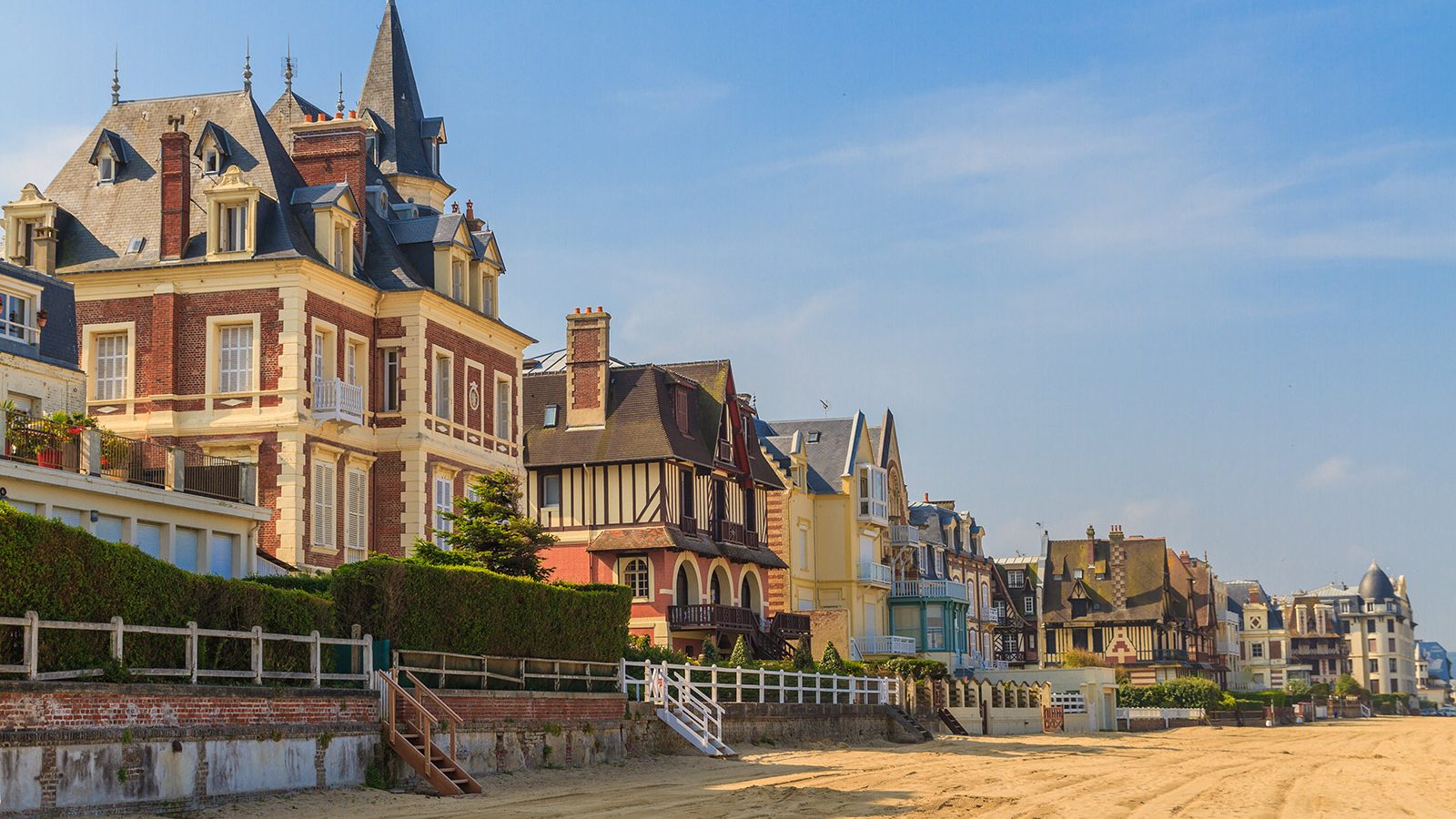
Trouville-sur-Mer, one of the first-ever coastal resorts to be developed in France, is a 25-minute drive from The French House, either via a cross country route, or you can follow the coast road through Honfleur, passing by smaller seaside villages. Trouville is a family-friendly seaside resort, originally a fishing port, combining glamorous buildings and villas, a vibrant fish market, splendid sandy beach with boardwalk and many other surprises. Street market days are Wednesday and Sunday mornings.
Deauville
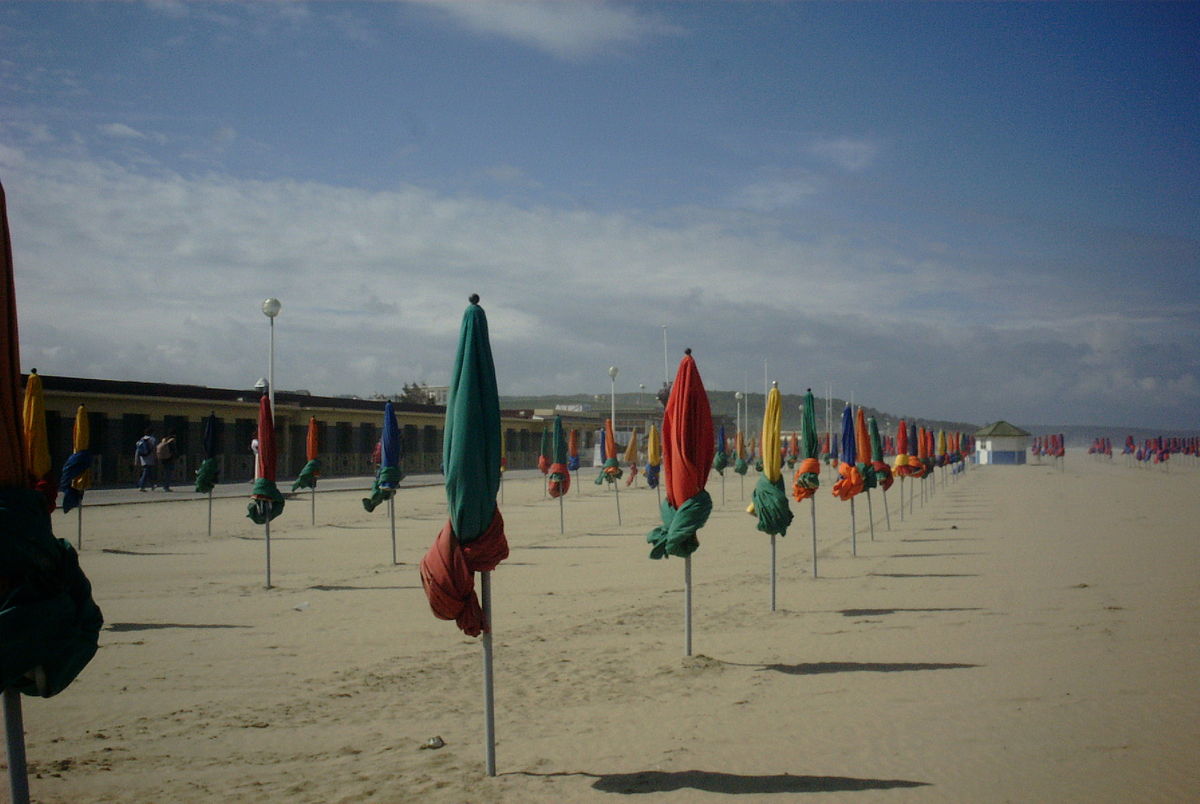
Situated adjacent to Trouville, separated by a small bridge, Deauville is on the other side of the mouth of the river Touques. It has been an up-market holiday destination since being connected to Paris by rail. The train station has art-deco styling. Deauville is known for its grand casino, golf courses, horse races and American Film Festival. Its wide, sandy beach is backed by Les Planches, a 1920s boardwalk with bathing cabins. The town has chic boutiques, elegant belle époque villas and half-timbered buildings.
Houlgate
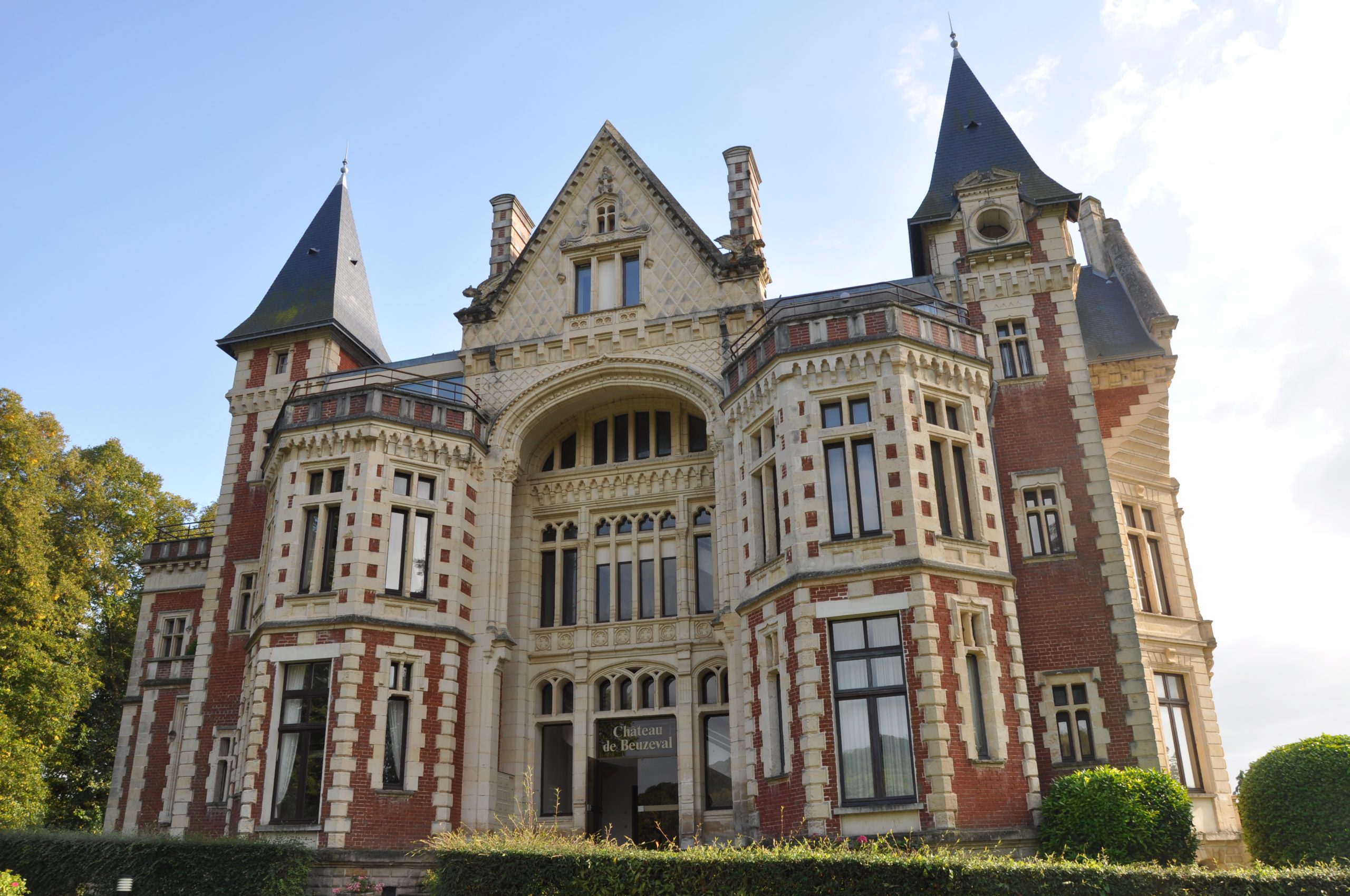
A few minutes drive beyond Deauville are other great places to visit including the family resort of Houlgate, situated between Cabourg and Villers-sur-Mer.
Cabourg
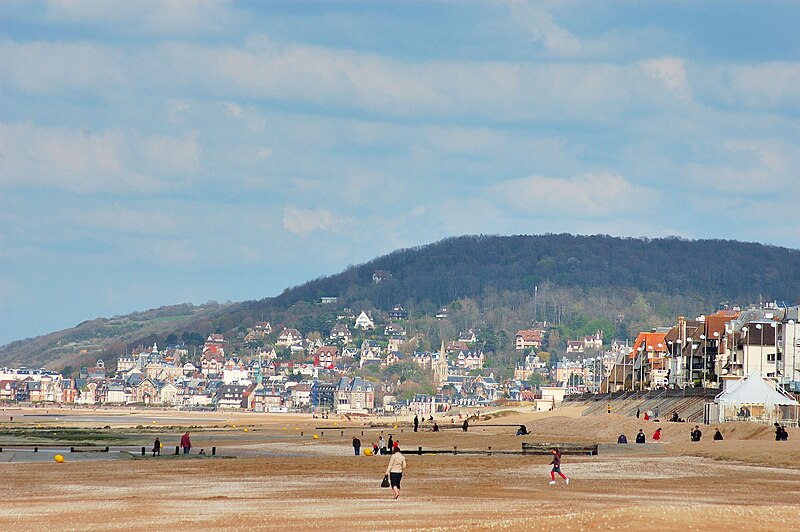
Cabourg has been popular destination for sea bathing from 1855, the town developed rapidly over the centuries, as illustrated by the many Belle Epoque villas and the beautiful Grand Hôtel de Cabourg, for many years home to Marcel Proust.
Grestain Abbey
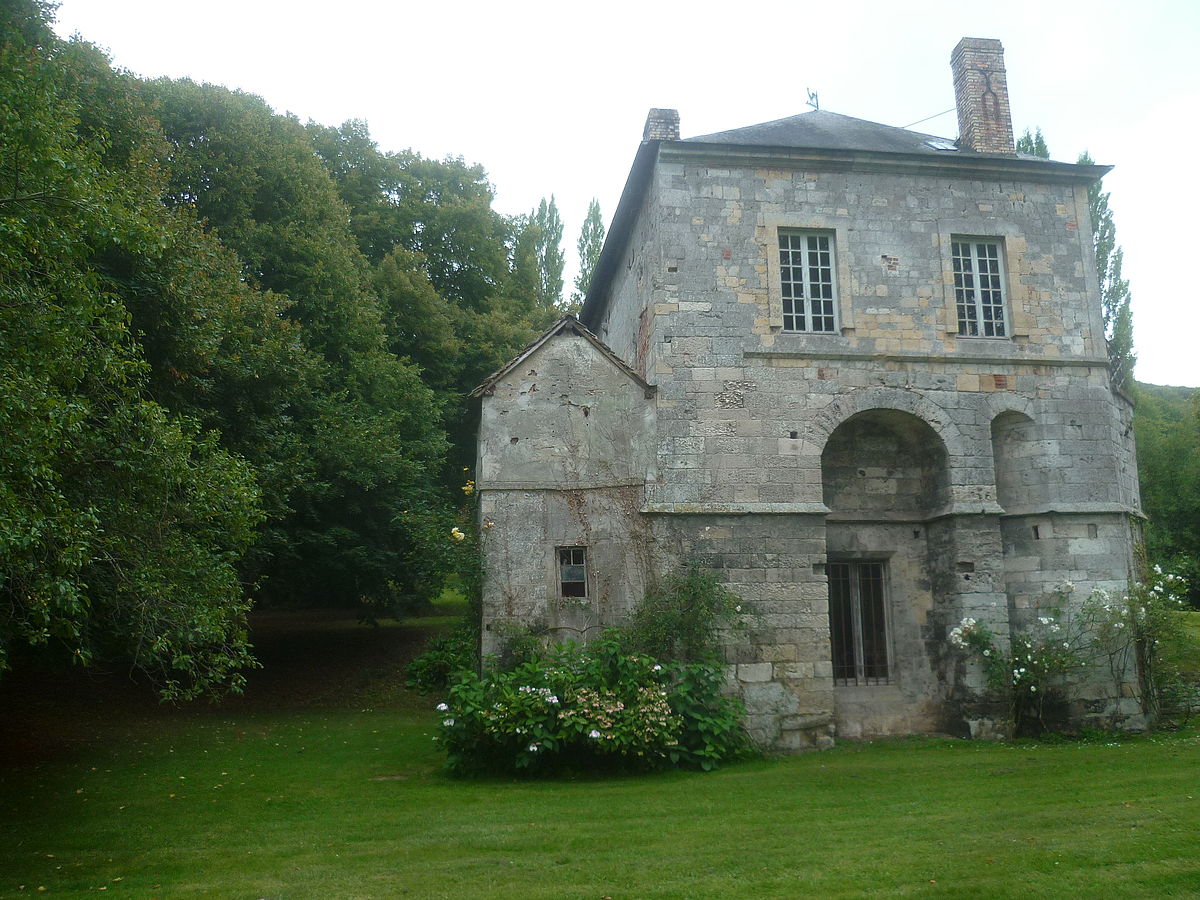
Grestain Abbey (or Grestein Abbey, French: Abbaye Notre-Dame de Grestain) was an 11th-Century Benedictine monastery near the town of Fatouville-Grestain, which is located in the modern-day Eure département of Upper Normandy, France. The abbey was in the Catholic Diocese of Lisieux. Closely associated with the family of William, Duke of Normandy, the abbey was instrumental in the Normans taking control over the Church in England in the centuries following the Norman Conquest of England, establishing new churches and priories in England, and Abbots of Grestain ordained many English priests. Many churches mentioned in the Domesday Book of 1086 cite Grestain as the founding establishment.
Villers-sur-Mer
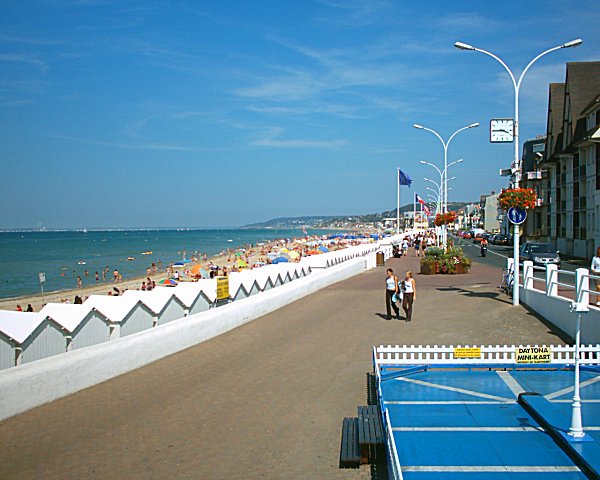
Villers-sur-Mer is known for the large topiary dinosaurs facing the sea from the garden of the office of tourism. In certain years, a baby dinosaur is added to the garden. It is the starting point of the Vaches Noires cliffs – a site where many fossils have been discovered. There is a small museum in the enclosure of the office of tourism, which has an outline of the resources and discoveries. It is a place widely known by specialists in the ammonites and other fossils.
Le Havre
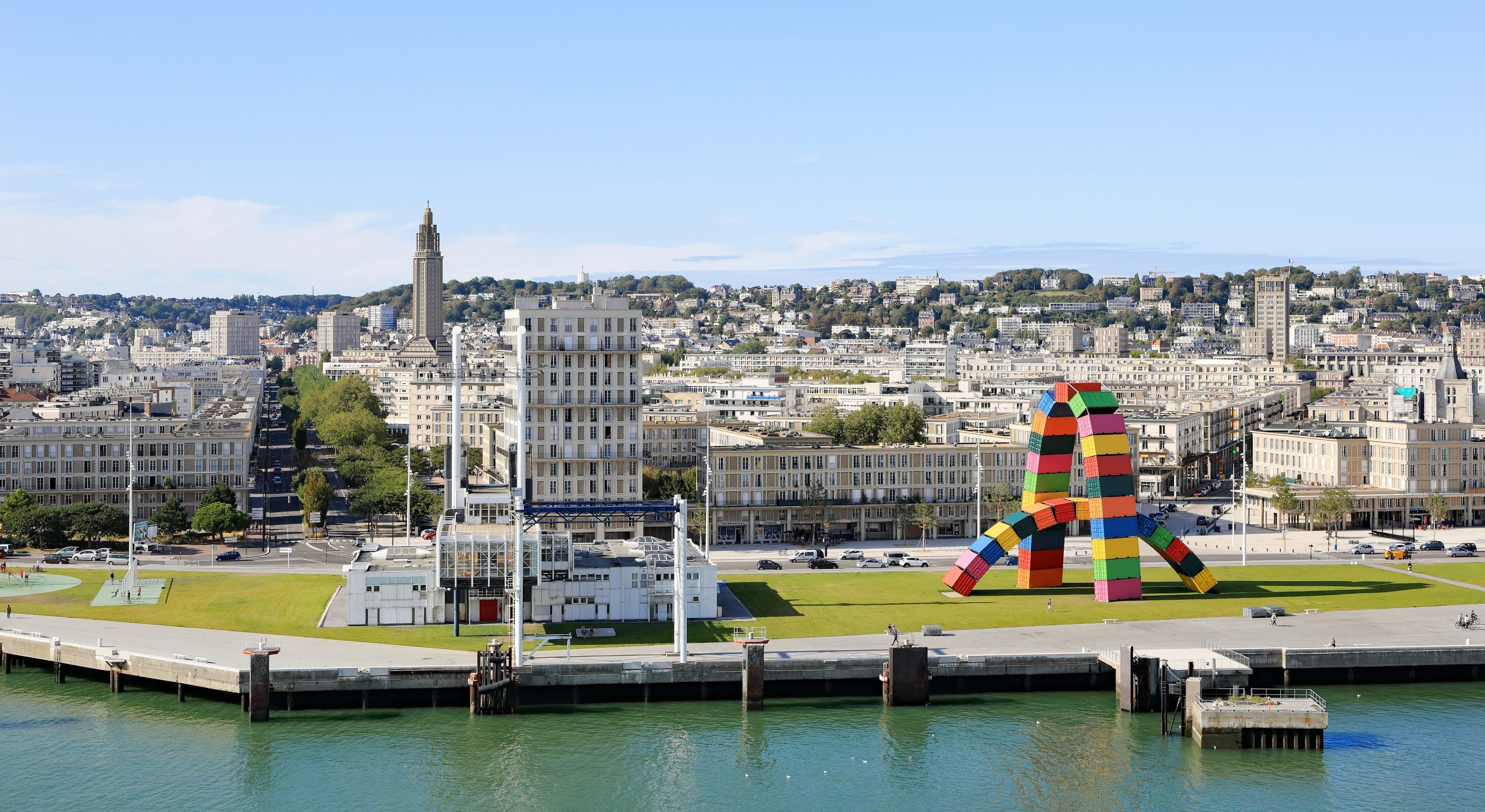
Situated at the mouth of the river Seine, the port city of Le Havre was almost completely rebuilt after World War II. The unusual concrete architecture of Le Havre, designed by Auguste Perret, has resulted in the city centre becoming a UNESCO World Heritage Site in 2005. Highlights of Le Havre include the Perret show flat, impressive modern art museum and picturesque marina and beach. It is also an important cross-Channel ferry port and the largest container port in France. Le Havre combines concrete grandeur with seaside cool, boasting lively bars and restaurants and a thriving arts scene.
Etretat
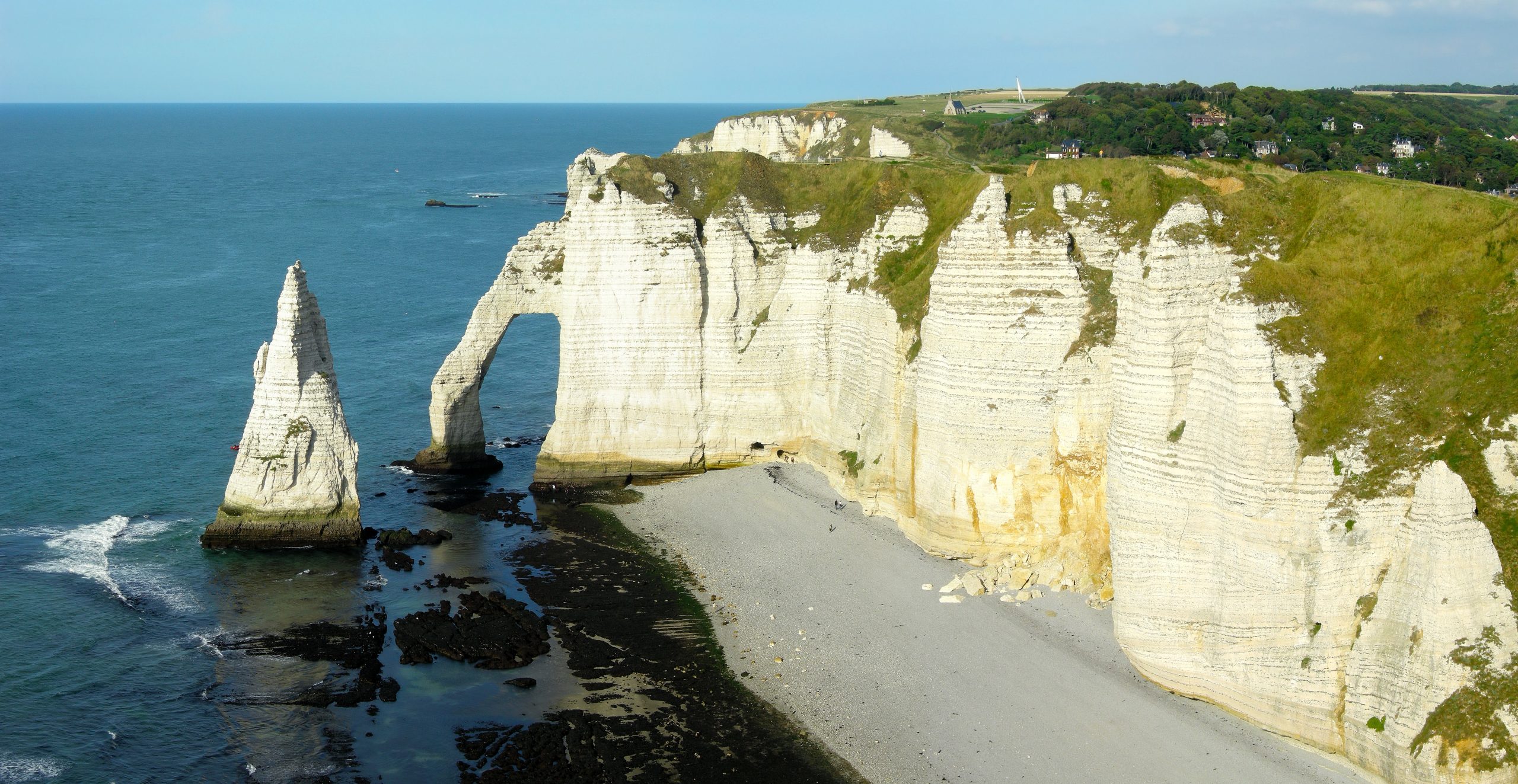
Nature has carved unusual shapes out of the white cliffs in Etratat and as a result, this picturesque spot attracted many Impressionist painters, who sought to capture the cliffs on canvas. The pretty seaside town of Etretat is also the setting for Maurice Leblanc’s popular French children’s book about Arsène Lupin, the gentleman burglar. There is an18-hole golf course on one cliff, and the magical gardens on the other, both of which afford stunning views of the cliffs and town.
Seine Valley
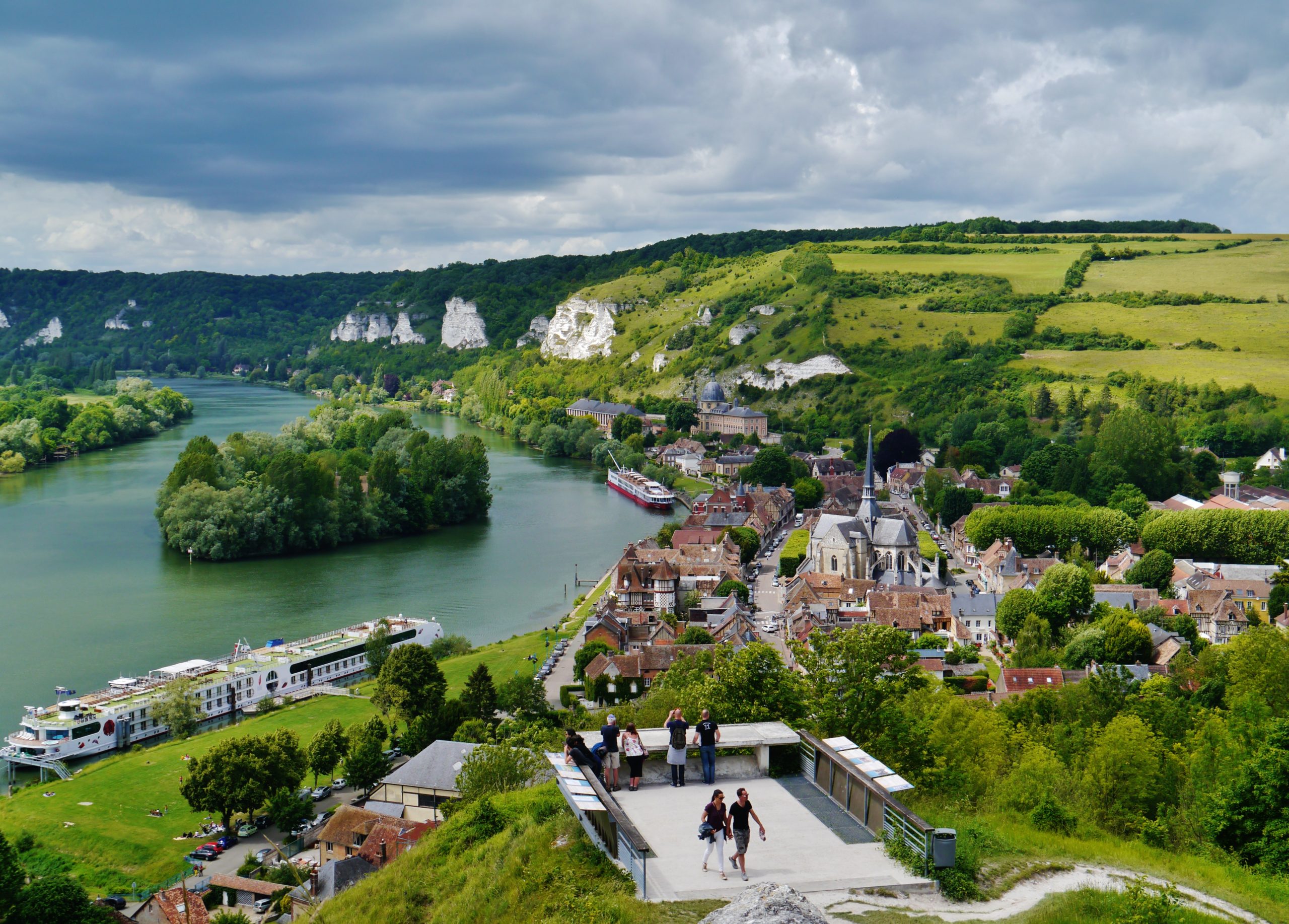
The Parc Naturel Régional des Boucles de la Seine covers a range of exceptional landscapes: forests, a diverse range of flora and fauna, aquatic environments, rich heritage sites – more than enough to satisfy any nature lover. If you want to take it even further, be sure to visit the Estuaire de la Seine. Between the Pont de Tancarville and the opening of the Seine, this nature reserve has landscapes to take your breath away. On horseback, on foot, or by bike, these spaces are perfect for all types of adventurers.
For those who prefer to be on the water, we recommend river cruise on the Seine. Cruise boats, water excursions, or speedboats are some of the best ways to discover the Seine Valley. Alternatively, take the “bac,” which allows visitors to cross from one side of the Seine to the other.
Don’t miss one of the biggest events of the Seine River Valley: the Armada. The festivities include a massive gathering of sailboats, boats, held on the banks of Rouen every five years. Over the ten day period, the city is even warmer and livelier than usual!
D Day Beaches
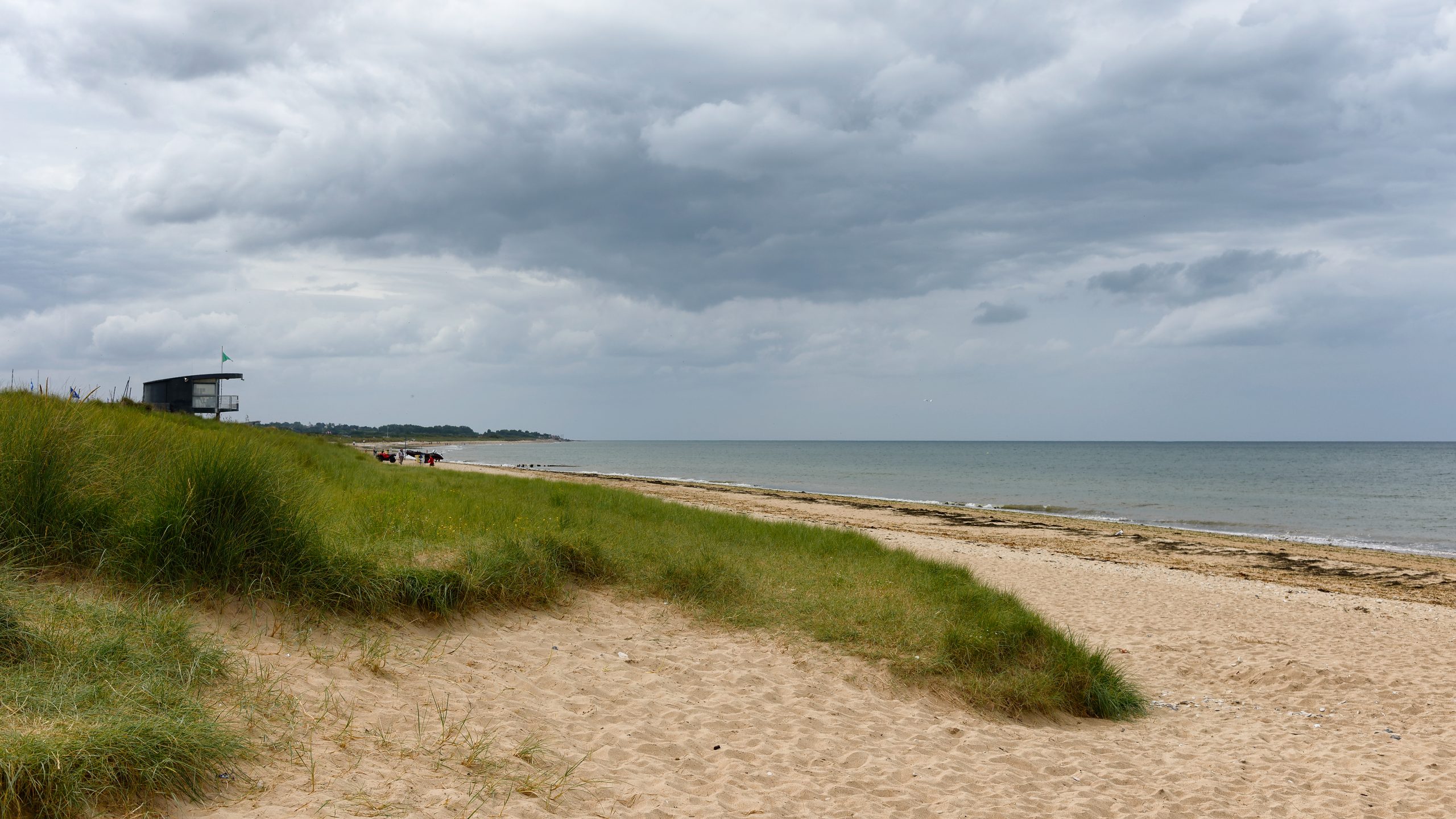
The historic D-Day Normandy beaches stretch 50 miles along the Normandy coastline. All are within an hour or two drive from The French House.
Arromanches
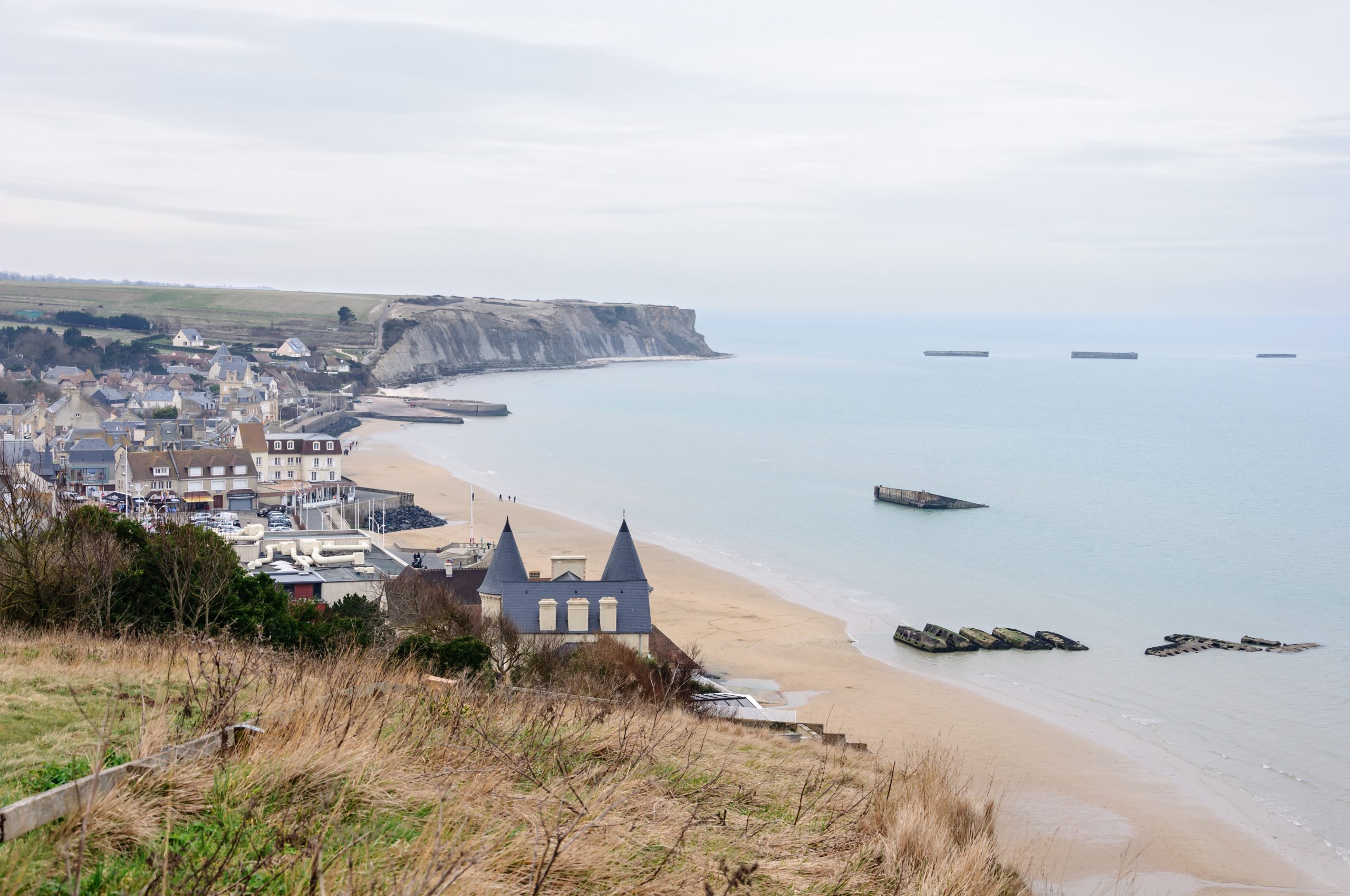
One of the nearest D-Day beaches are at Arromanches, an historic town at the centre of where British troops landed. It is also where the Mulberry Harbour, an artificial port, was installed to enable heavy equipment to be landed in France. More than 2 million men, 500 thousand vehicles, 4 million tons of material came through this small coastal town, beginning the journey to free Europe from Nazi occupation. Remnants of the Mulberry harbour can still be seen at low tide. There is now a fine museum near the beach plus a panoramic cinema experience. Arromanches is 1 hour 15 minutes drive from The French House.
Pegasus Bridge
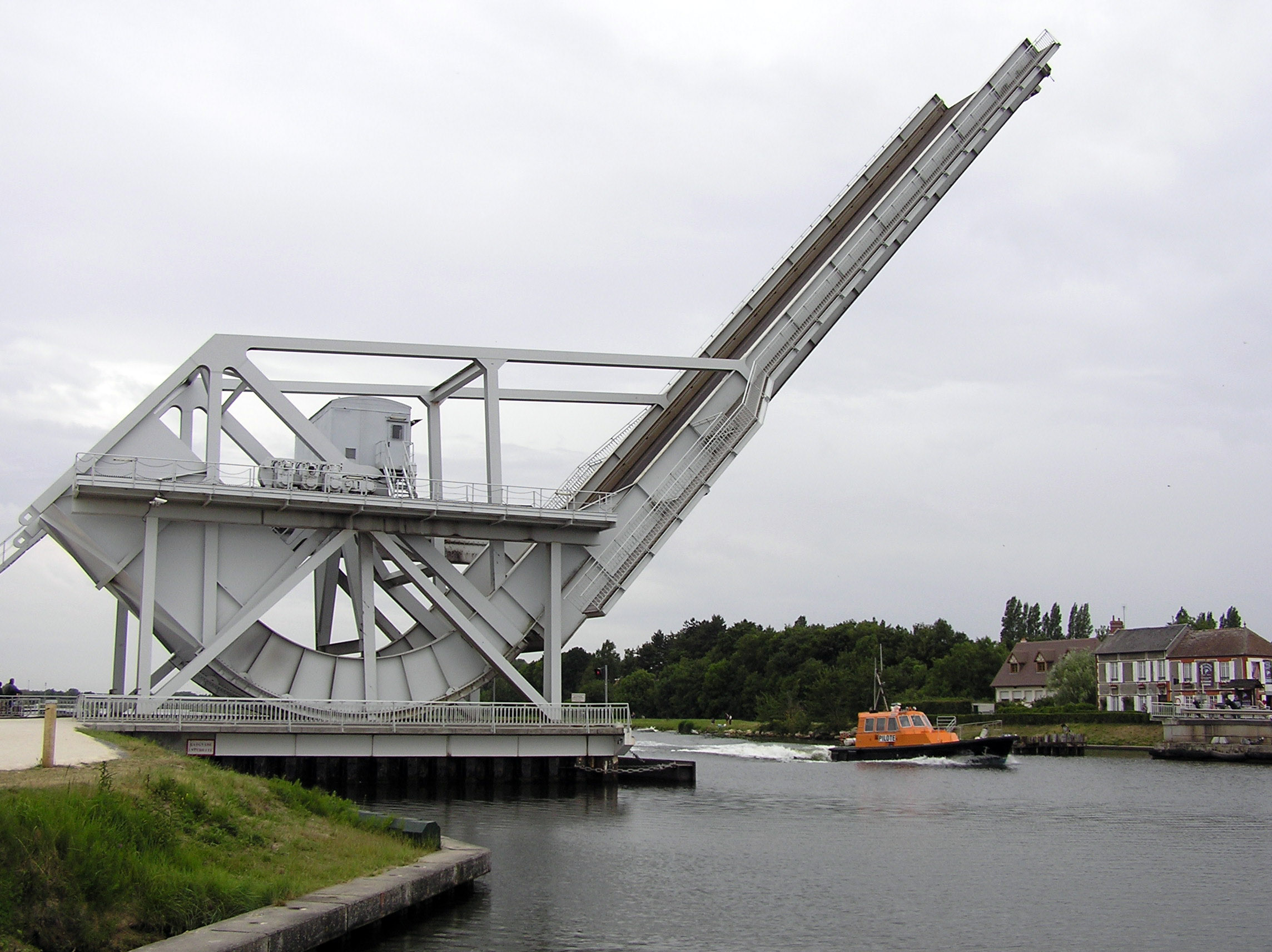
This bridge near Caen was captured by paratroopers from the 6th Airborne Division who crash landed in gliders a few yards from the bridge just hours before the D-Day landings began. The first house to be liberated in France, is now the Pegasus Bridge Café. The café was run by Arlette Gondree who was 4 years old and living in the house when it was liberated. This bridge and excellent museum are just 45 minutes from The French House.
Utah Beach
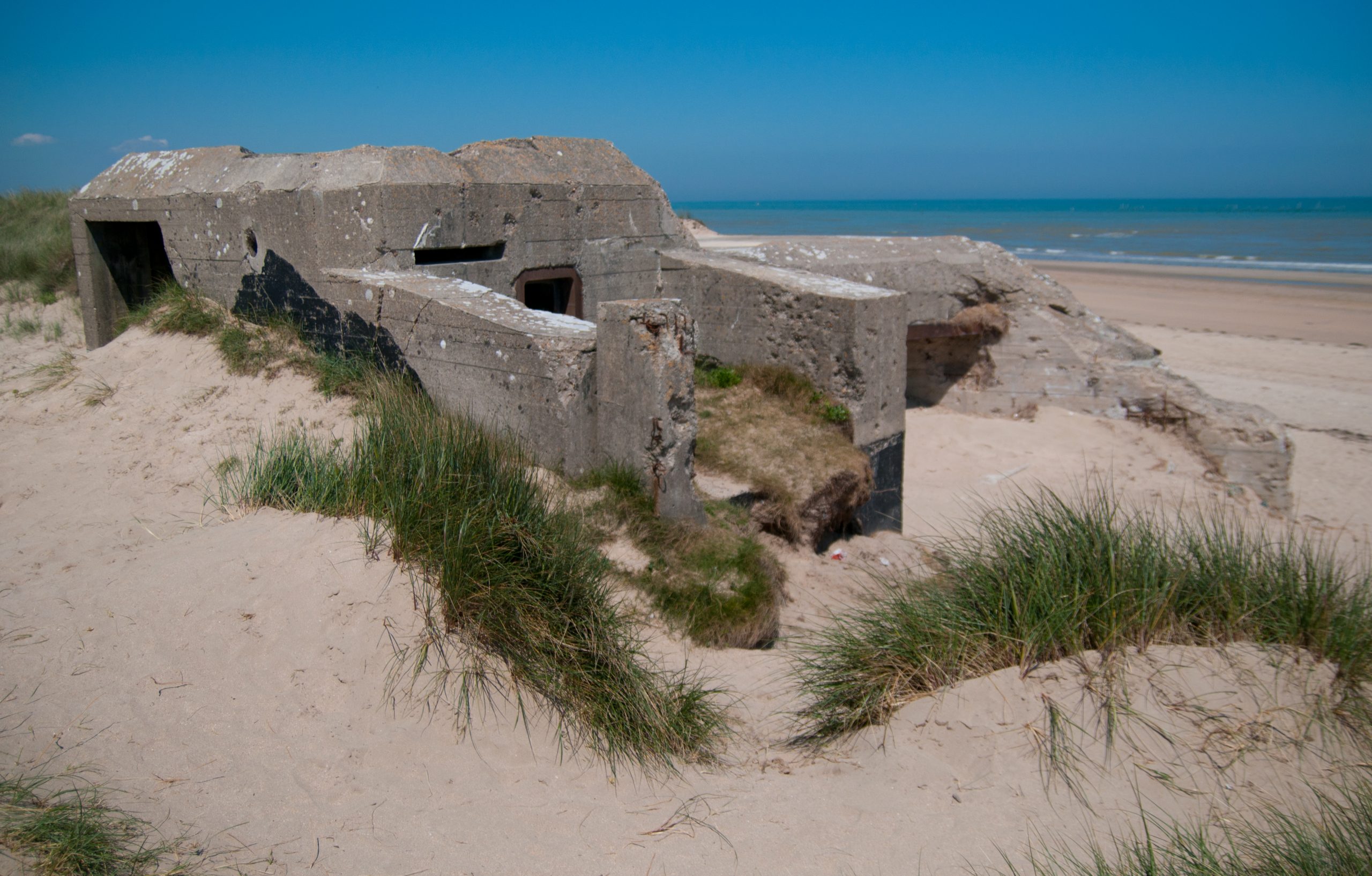
Utah Beach is one of the American landing beaches, an hour and 45-minute drive from The French House. It offers a D-Day Experience where you’ll be able to take a trip via a flight simulator aboard a genuine C-47 from World War II. You can also visit the extensive war graves in the area.
Caen
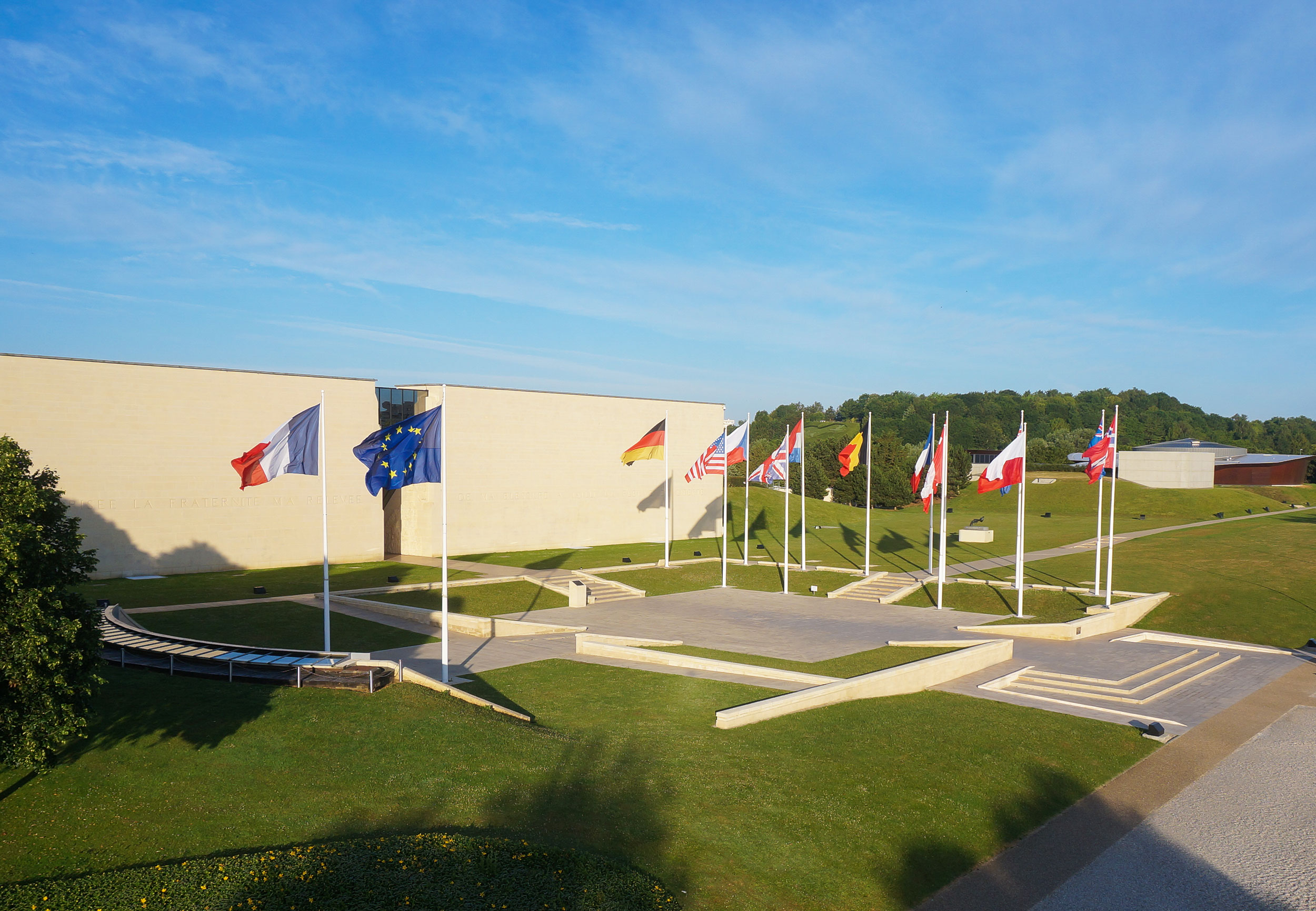
The remarkable Mémorial de Caen, 50 minutes from The French House, is the largest museum in France dedicated to 20th-century history, commemorating in particular D-Day and the Battle of Normandy, World War II, the Cold War and the ongoing search for peace.
Bayeux
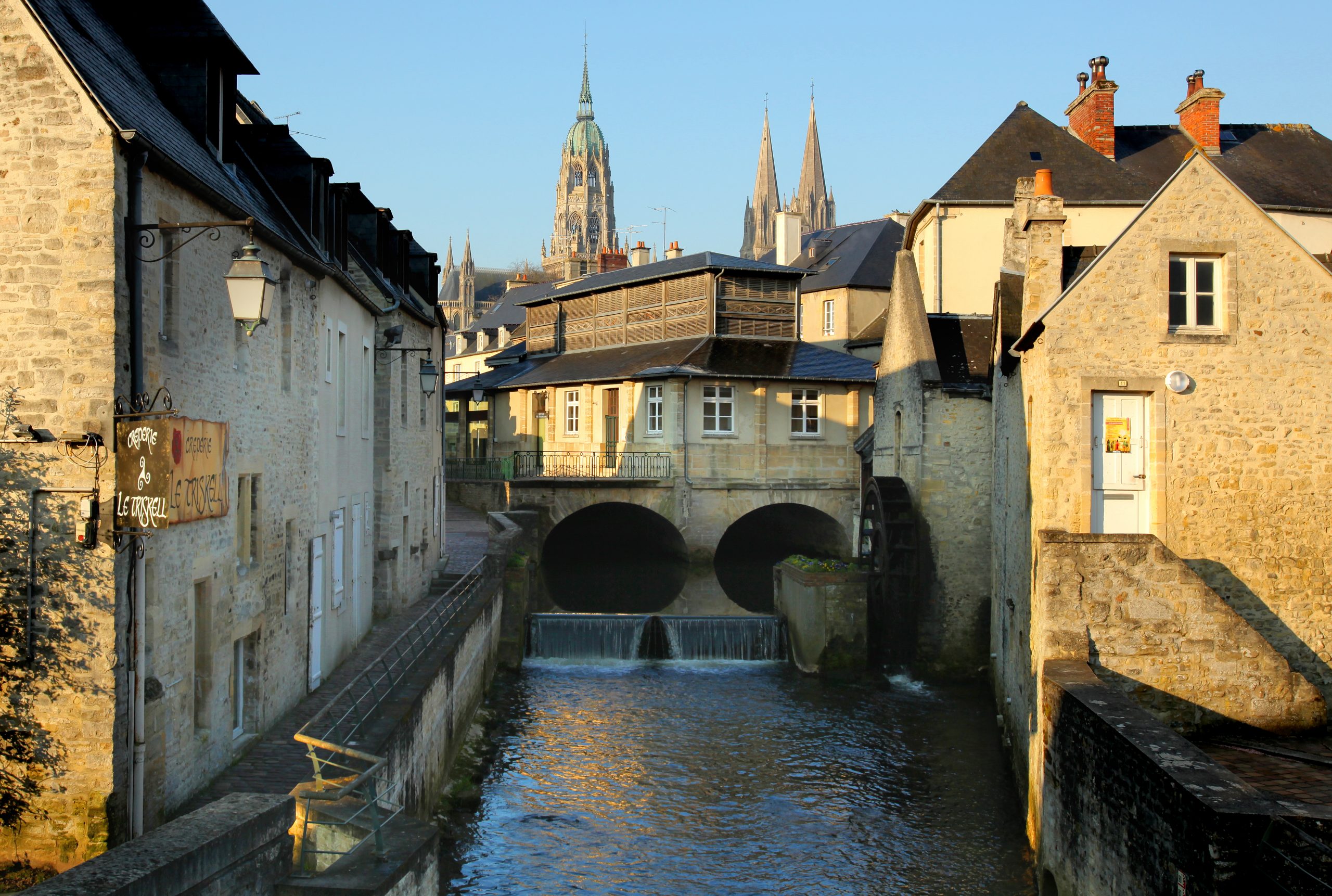
Bayeux is just over an hour from The French House.
Its medieval centre contains cobbled streets, half-timbered houses and the towering, Norman-Gothic Cathédrale Notre-Dame.
It is also home to the amazing Bayeux Tapestry detailing the epic adventures of Willian the Conquerer in 1066. (William’s mother, Herleva, lived and died in Grestain Abbey, just 3 miles from The French House).
Bayeux also has the excellent Museum of the Battle of Normandy which is situated by a significant cemetery with over 4,000 war graves from D-Day and the battle for Caen.
Giverny
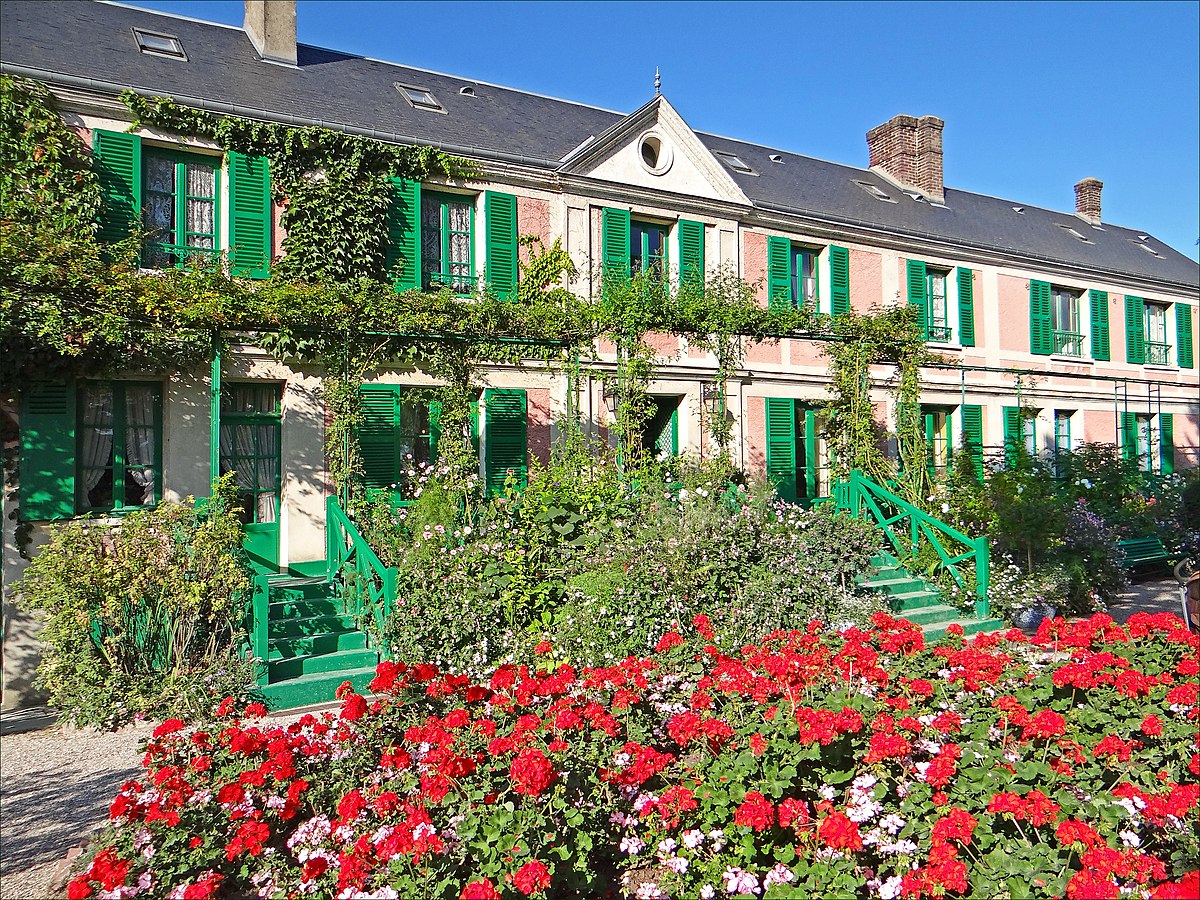
Monet’s House and Garden at Giverny are hour and 20 minutes from The French House. The village is also home to the Museum of Impressionism that has an excellent restaurant.
Walking through the village of Giverny is a joy. There is a palpable tranquility despite the hordes of tourists. Monet lived here with his big family. Monet in his prime, an artist at the top of his game, becoming wealthy. Many artists and writers came to visit him, including many American artists who travelled to Europe to paint in the fabled light of the Seine valley and to be near the great man. Monet was highly regarded in the USA before any real success in France where the critics were relentlessly vicious for many years.
With money he earned from paintings sold in the USA, he rented and then bought the house in Giverny. It was an inauspicious purchase. When his good friend, the artist Camille Pissarro, first visited the house, he described it as a small peasant’s home with tiny rooms, no running water, outside plumbing and a ramshackle veranda, a primitive house, too poor to raise flowers to paint, or grow vegetables to eat. It faced railway tracks with a marsh beyond. The surrounding farm was dreary.
Within a few years, however, his paintings selling well, Monet had created a beautiful home and an extensive garden that was to dominate his artistic output for the rest of his life.
American impressionists came to Giverny and rented cottages locally or stayed at the Hotel Baudy in the main small street, just yards from Monet’s house. Monet was rather grumpy about this distraction. So many visitors and one or two having eyes for his daughters.
Giverny played a seminal role in the history of art. Somehow, a rather nondescript house and a patch of unpromising garden in an unremarkable village was to be transformed into a very special place.
The house, garden and museum can be visited between 1st April and 1st November. The house opens at 9.30am and it is useful to be there when it opens and suggest you visit the house first before it gets very busy and avoid long queues.